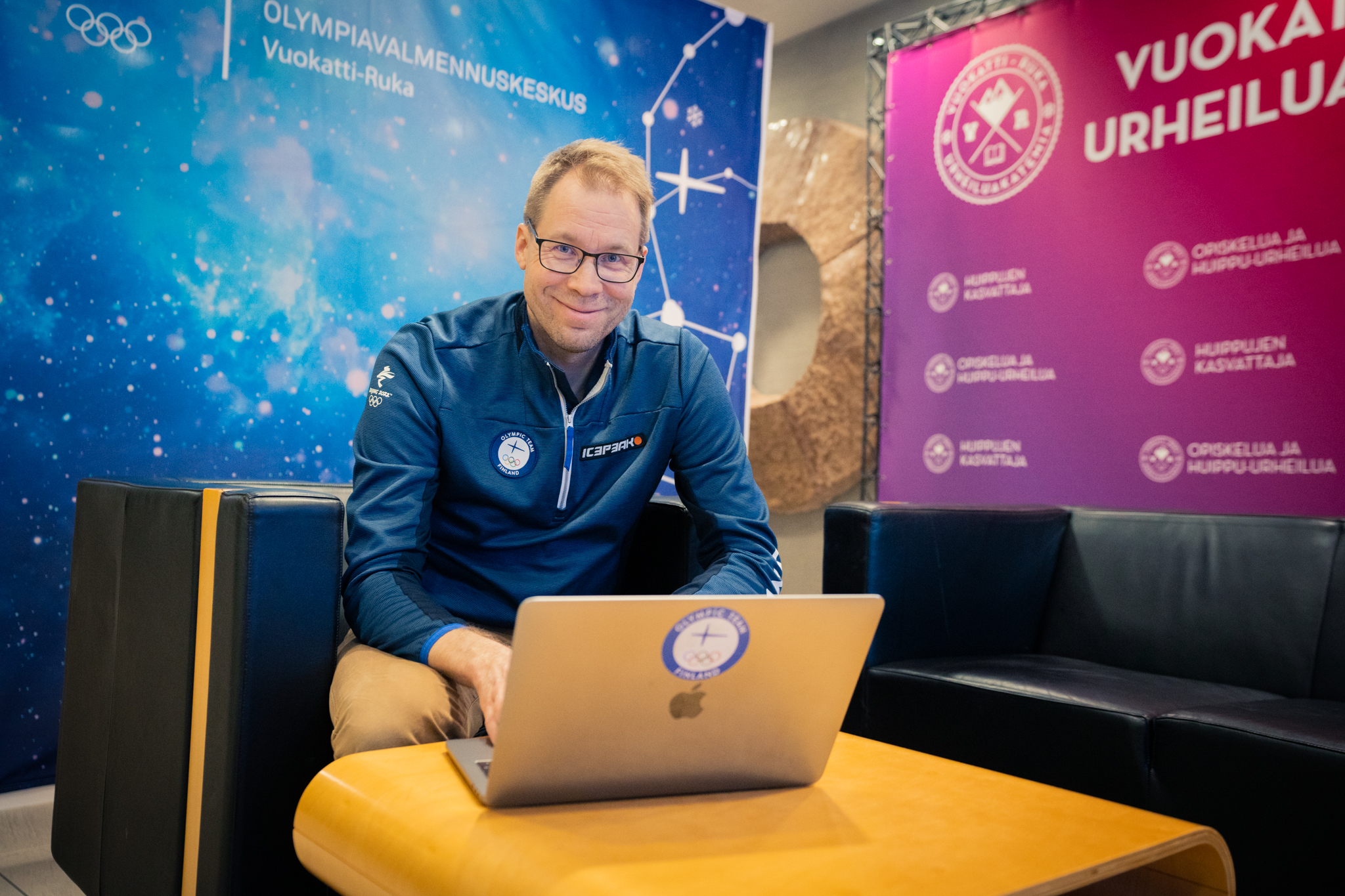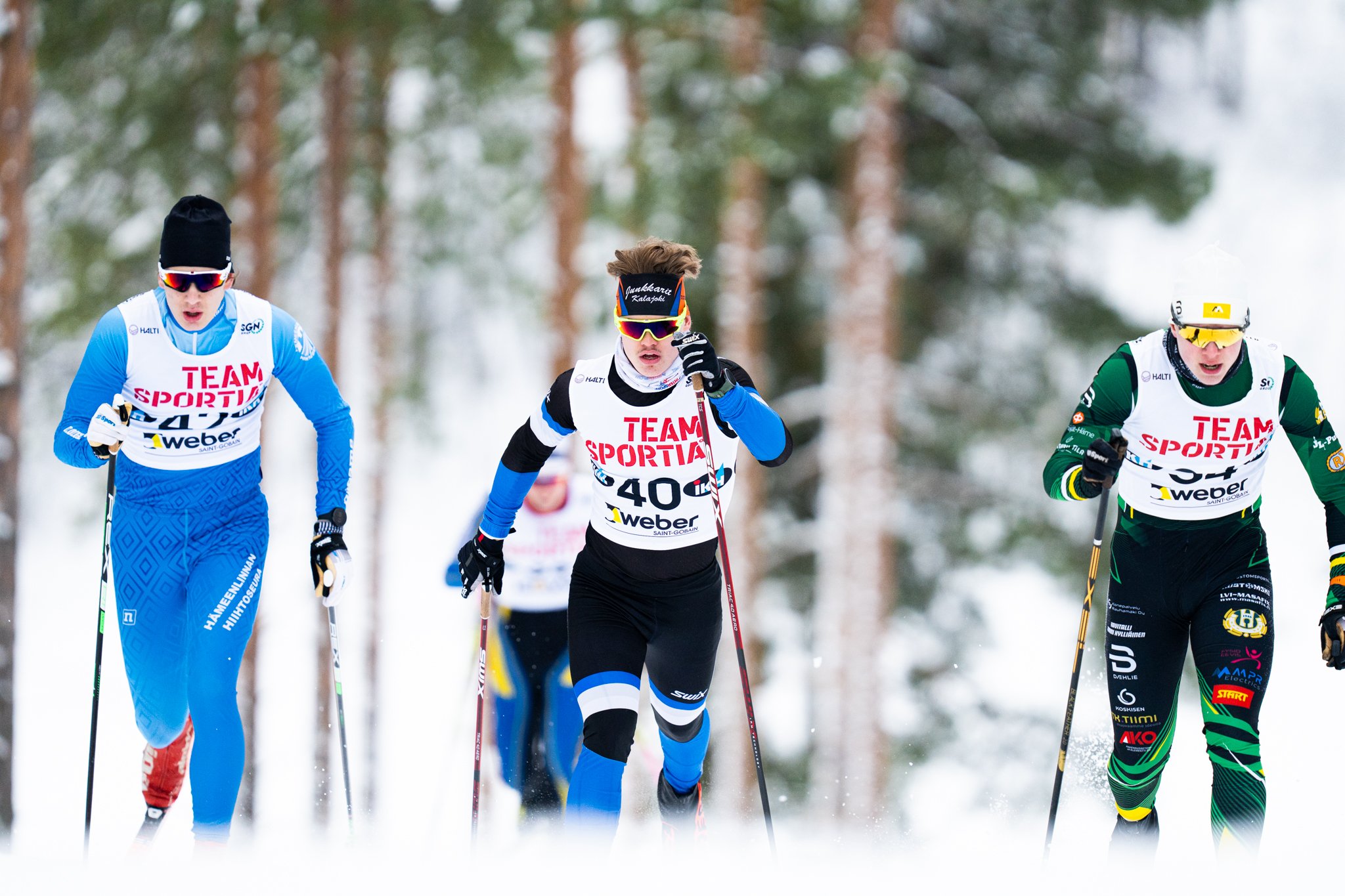28 February 2023
We looked into how the project has progressed and how data is being used in the Vuokatti-Ruka Olympic Training Centre now, 3 years later.
Olli Ohtonen, who is the Head of Research and Development in the Vuokatti-Ruka Olympic Training Centre, has participated in the project since its launch.
"The data project was started with a trial period that was carried out in the Finnish national nordic combined team. Now we are using the fourth system version of the Training 360° service platform. Here in Vuokatti we use the system in cross-country skiing, biathlon, alpine skiing and orienteering. The system has well over 100 users."
Ohtonen says that coaches have participated in system development.
"They have communicated what type of features they would like to see in the software. And so we have created a tool that coaches and athletes can utilize both in daily training activities and also in long term monitoring."
New analytics tool visualizes training load and recovery
"During development, many new features have been introduced into the system. The latest software version is compatible with most sports watch manufacturers, databases and recovery monitors. It collects information also from tests and surveys filled by the athlete. The daily surveys provide coaches with information on the quality of the sleep, state of mind, recovery and training load of the athlete."

Ohtonen is excited about the new analytics tool that was introduced to complement the existing daily screen at the beginning of this year.
"The monitoring period used to be a maximum of 28 days, but now all information can be viewed for a longer time period in a visual tool. For skiers, the season starts at the start of May and finishes at the end of April. Now we can view the progress and training load for the entire season in one screen. When needed, a coach can drill into individual sub-sections in more detail."
"The software produces graphics of, for instance, heart rate variations, which is important to monitor especially in endurance sports. You can also add competitions, training camps and training activities into the analytics tool.!
"The system helps the nutritionist by providing information on the energy consumption of basal metabolism and also on the energy consumption caused by training and other activity."
"Because the tool also includes heart rate and training level graphics, it provides plenty of information for the coach to assess the overall situation of the athlete."
“Data supports sports coaching”
Ohtonen thinks that it is a good thing that the system gathers information from various sources.
"There is heart rate data that is provided by sports watches and other wearables and experience-based subjective information from the athlete. In everyday coaching, the data helps make better choices: training load can be decreased or increased when needed. The data supports the coach in their work."
Ohtonen mentions that there are also benefits for the athlete.
"The system provides a good learning tool for the athlete. The data can help the athlete understand their own body better and recognize which training activity works and which does not work. The athlete can view the total training amount and intensity and keep track of how they themselves have assessed their own mental and physical condition. The system has been designed to be as user friendly as possible. It takes only a few seconds for the athlete to fill in the daily surveys."
Coach Jaakko Halonen is responsible for the training of young cross-country skiers in Vuokatti, and he uses Training 360° system in his work. He likes the fact that with just one login you can see the information of all 17 skiers.

"I mostly monitor sleeping heart rates and heart rate variations. The training heart rate graphs can be compared to heart rate variations, to try and see the logic behind the rate changes."
"Analytics tool is a welcome new feature. Because you can see the data for the whole year in one screen, it is interesting to observe how the values correlate to performance and development. Therefore, in the future it is easier to make better choices in training activities and training load."
Future data platform for elite sports research
Ohtonen thinks the system works well and is useful.
"The best thing about the system is that all athlete data is located in one place. I believe this is a unique feature when compared to similar systems used by other countries."
According to Ohtonen, there is plenty of opportunity for further development. In the future, for instance competition databases could be linked to the system. The long term goal of the project if to also collect data for research purposes.
"We are designing a permission mechanism that would allow the researcher to request a permission from the athlete to access anonymized data. The aim is to establish, for instance, how certain age groups in certain sports have trained and what the outcome of the training has been. All related development work will rigorously comply with data protection regulations and GDPR.
Data from different sports supports progress and creates continuity
The Olympic Committee Elite Sports Director Matti Heikkinen also highlights the importance of data in the future.
"Right now we need more users in the system. Specific needs of different sports should be taken into account, but we also need to collect training load data across all sports. The information should be collected in a coordinated and systematic manner to make sure it is usable in the future."
"Eventually it boils down to understanding the activities that were carried out, the outcome of those activities and what should be done in the future to achieve better results."
Heikkinen, who was previously known as a cross-country skier, still has his training journals dating back to the early days of his skiing career.
"When I learned to write, I also started to fill in my first training journals. Later we started using Excel, GPS data and cloud-based tools. We are now living in a time when a large amount of data is accumulated from different sources."
Ohtonen reminds us that Training 360° system does not replace any of the data collection methods currently in use.
"No matter the sport, training journals, various measurement systems and test databases are still needed. The role of the system is to combine all data."
Heikkinen realized during his own skiing career that the importance of experience-based information increases as the athlete advances in their career.
"If the information is not collected, there will be no continuity. The collected data is valuable capital for elite sports in general."
Are you interested in Training 360°?
If you are interested in the Training 360° solution, please contact Tietoevry!
Interviewees:
 |
 |
 |
|
Olli Ohtonen |
Jaakko Halonen |
Matti Heikkinen |